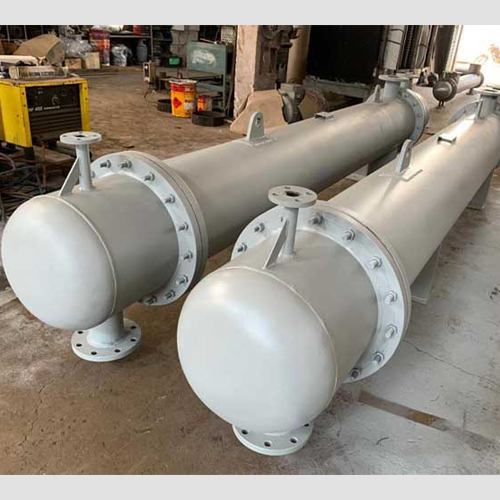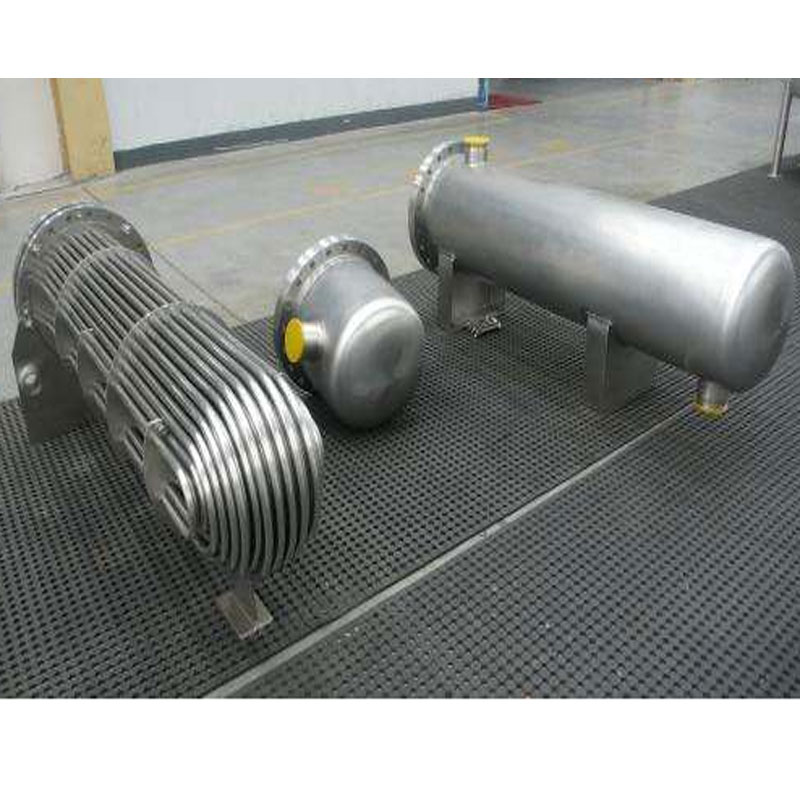Shell and Tube Heat Exchangers
A shell and tube heat exchanger is the most common type of heat exchanger in all Industries. Mostly used in higher-pressure and Higher Temperature applications. Shell and Tube Heat Exchangers are widely used due to their Rigid construction and Long Life.
These types of Heat exchangers are having two divisions one is shell and other is Tubes. Here One fluid runs through the tubes, and another fluid flows over the tubes (through the shell) to transfer heat between the two fluids. For this purpose seamless/ERW or Rolled pipes are used for shell. And Seamless tubes are used for Tubes.
Our Shell and Tube Heat Exchangers Design Process Contains Two Parts - Thermal and Mechanical Design. Shell & Tube Heat Exchangers are most commonly used in almost all industries like- Refineries, Chemical plants, Fertilizer plants, Genset units, Oil & Gas and Shipping. Typical use of Heat Exchanger is to cool or heat the fluids or gases.
U Tube Bundle Heat Exchangers
We are the leading manufacturers of U Tube bundle heat exchanger in India. A U tube bundle heat exchanger is the most common type of heat exchanger in all Industries. Mostly used in higher-pressure and Higher Temperature applications.
U Tube bundle Heat Exchanger which typically have U-tubes. U Tube bundle Heat Exchanger can build "U" tube bundles, straight tube "floating" tube bundles, or we can retube fixed tubesheet heat exchangers when the bundles is not removable and multitherm is not locked into any one material. U Tube bundle Heat Exchanger can be used to boil water recycled from a surface condenser into steam to drive a turbine to produce power. Most U Tube bundle Heat Exchanger are either 1, 2, or 4 pass designs on the tube side. U Tube bundle Heat Exchanger fluid goes in one end of each tube and out the other.Surface condensers in power plants are often 1-pass straight-tube heat exchangers see Surface condenser for diagram. U Tube bundle Heat Exchanger of each tube are connected to plenums (sometimes called water boxes) through holes in tubesheets. The tubes may be straight or bent in the shape of a U, called U-tubes.
Two and four pass designs are common because the fluid can enter and exit on the same side. This makes construction much simpler. There are often baffles directing flow through the shell side so the fluid does not take a short cut through the shell side leaving ineffective low flow volumes. These are generally attached to the tube bundle rather than the shell in order that the bundle is still removable for maintenance. Counter current heat exchangers are most efficient and they allow the highest log mean temperature difference between the hot and cold streams.




